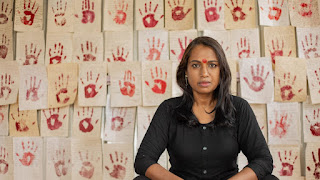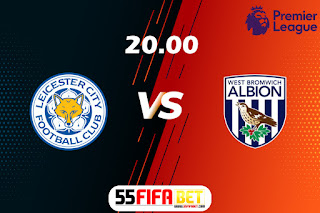I'm on a mission to empower India's transgender community
I'm on a mission to empower India's transgender community,
one painted palm at a time
Iremember my childhood so vividly. Until the age of 11, I
was a playful, happy child at home, and a good student at school.
Growing up in rural India, I was considered the more
privileged child among my two sisters, having been born male. Yet, deep inside,
I longed to be my true self.
I was a naturally effeminate child. I felt uncomfortable
being addressed as "he," and it seemed like there was this girl
inside who liked everything a little girl of my age liked. This made me a
constant target. But I didn't fear those big, bullying boys and would fight
back, never ashamed of who I was.
Then, at the age of 14, I gave up. After I started losing
interest in school, certain teachers became aggressive and would punish me with
a cane. I could never tell my parents. Amid painful episodes of shame and
self-doubt, I considered ending my own life, though my family's love stopped me
from doing so.
I cut class and would go to parks and forests to get away
from everyone. Under the trees, I wrote poetry and imagined my future life in
drawings, which helped me heal my inner wounds.
When I finally came out as transgender to my parents, I was
taken to a psychiatrist to help with my gender dysphoria, or the distress
caused by the discrepancy between a person's body and their gender identity. He
asked me to draw how I saw myself in the future, so I drew a beautiful girl
with a long skirt, hat and a big smile. He was taken aback, but he eventually
helped me gain my family's acceptance.
This is the dilemma faced by teen children with gender dysphoria.
Unable to bear the bullying but terrified of disappointing their parents, they
fear going to school and they fear dropping out, too. If they "out"
themselves, only a few are accepted by their parents.
"The deepest wounds cannot heal until they are
expressed. Practicing art helps us heal emotional injuries, by providing a safe
opportunity for self-expression and shaping one's identity."
When our families reject us, we find solace and refuge with
other "hijras" who are also struggling to survive. In my lifetime, I
have lost many transgender friends to suicide. Other friends died from AIDS.
As a teenager, I witnessed -- and was the victim of --
harassment. A transgender friend of mine, who was a sex worker, was raped by
seven men. Another friend was chased by her own brother wanting to burn her.
While another friend was driven out by her family. These childhood experiences
built my raging desire for justice and inspired me to become an activist for
the transgender community.
Healing through art
After completing my master's degree in journalism, I started
a magazine called Sahodari (or "sister") to reach out to and support
the transgender community. I used photographs, art and text to educate people
about mental health, transitioning and their right to dignity.
Within a few years, I had founded the Sahodari Foundation
and trained our team in visual storytelling.
Art has helped me identify my self-worth. It has been a
medium for me to express my hope, joy, fear, anguish, desires and struggles. It
is a reflection of my deep self that mirrors my journeys. It is a divine
experience. When I paint, it is like my blood flows into the canvas and there
is a soul connection. My artworks "The Purple Princess" and "I
with in" celebrate the pure feminine and androgynous expressions with
bright fluorescent colors. More recently, I have started to incorporate
augmented reality into my artworks -- a technology that will help provide
another level of meaning and emotional engagement with audiences..
Many people in the community are artistic and creative, but
they seldom have the opportunity to practice their art. I realized that our
community could not only express themselves through art, they could make a
living from it. That is how our Transhearts project was born. I traveled with
my team to several cities and small towns in south India to offer free
workshops on expressive painting. It has been a therapeutic experience for the
participants. When they are making art, they forget time.
We have exhibited the community's artworks in galleries,
universities, colleges and public spaces. The reception had been tremendously
positive. When people see the artwork they can identify and empathize with us.
Each piece of art tells a story. Abinaya's "The
Struggling Sex Worker" was a moving work, very raw in portraying the
exploitation of trans bodies. Viji D's "Begging Cycle" expresses the
anguish of asking for money from strangers in trains to meet her basic needs.
Nayanthara's "Finding Oneself" is beautiful, spiritual and powerful.
The deepest wounds cannot heal until they are expressed.
Practicing art helps us heal emotional injuries, by providing a safe
opportunity for self-expression and shaping one's identity. It can bring out
our beautiful side. It can make us more tolerant of differences -- and of one
another.
Standing up against violence
Sexual violence is a terrible, horrible, health-affecting
issue that transgender people have endured for decades. Research from the
Indian states of Maharashtra, Tamil Nadu and Karnataka found that four in 10
transgender people will experience some form of sexual abuse before the age of
18. Many of us remain silent victims.
The Red Wall Project was created to empower the voices of
India's transgender and gender-diverse people, and to help resist the crimes
perpetrated against us. It is a community "art-ivism" project whereby
participants are interviewed by my team and write down their experiences of
assault, abuse or rape on paper marked with their palm prints in red paint.
Listening to the experiences can be traumatizing, yet we are
determined to do it. If we don't tell our community's stories, who will?
With their consent, we bring these stories to the public.
During the exhibitions, I use my poetry and performance art to provoke dialogue
about taking action against gender-based crimes.
The testimonials have been exhibited at the British council
in Chennai, the Alliance Française in Trivandrum and various other educational
and cultural institutions across India.
We want to reach out to India's young people with our
stories, and tell them that it is unacceptable to hurt people based on their
gender identity. Through victims' first-hand accounts, we can show them that we
are human beings who deserve better treatment, respect and dignity.
Whenever we exhibit these testimonials, I see people reading
them patiently for hours. I have seen visitors who, after reading, sit in
silence in tears. Young people come to me and say, "What can I do to stop
this violence? How can I be supportive?" And I tell them: "Educate
yourself more, sensitize your family and your friends to be trans-friendly.
Empathize with us. That is all we need."
Struggle for recognition
For decades, our community has struggled for acceptance and
equality. In 2014, hard-fought battles led to a milestone victory when India's
Supreme Court finally recognized transgender people as a "third
gender." It was a move I had long lobbied the judiciary for, and the legal
recognition meant, for instance, that people could enroll at academic
institutions, as openly transgender, without fear.
"The rainbow is shining bright and beautiful. I see
hope."
Many corporations have started to hire transgender
employees. Years of activism and awareness-building have resulted in many other
welcome changes, including the positive portrayals of transgender people in
mainstream media and films. In January 2020, the Transgender Persons
(Protection of Rights) Act came into effect, providing further legal
protections of our rights and welfare.
There is still much work to be done. We are still fighting
for affirmative action to ensure jobs and places at educational institutions.
We want protection against stigma and discrimination, and legal guarantees that
the punishments for crimes against transgender people will be severe.
But the rainbow is shining bright and beautiful. I see hope.
I see a better future for our generation of queer Indians. I see India as a
place that can uphold LGBTQI rights in the world. And I see India as a pioneer
of transgender rights in the future. เว็บพนันออนไลน์



ความคิดเห็น
แสดงความคิดเห็น